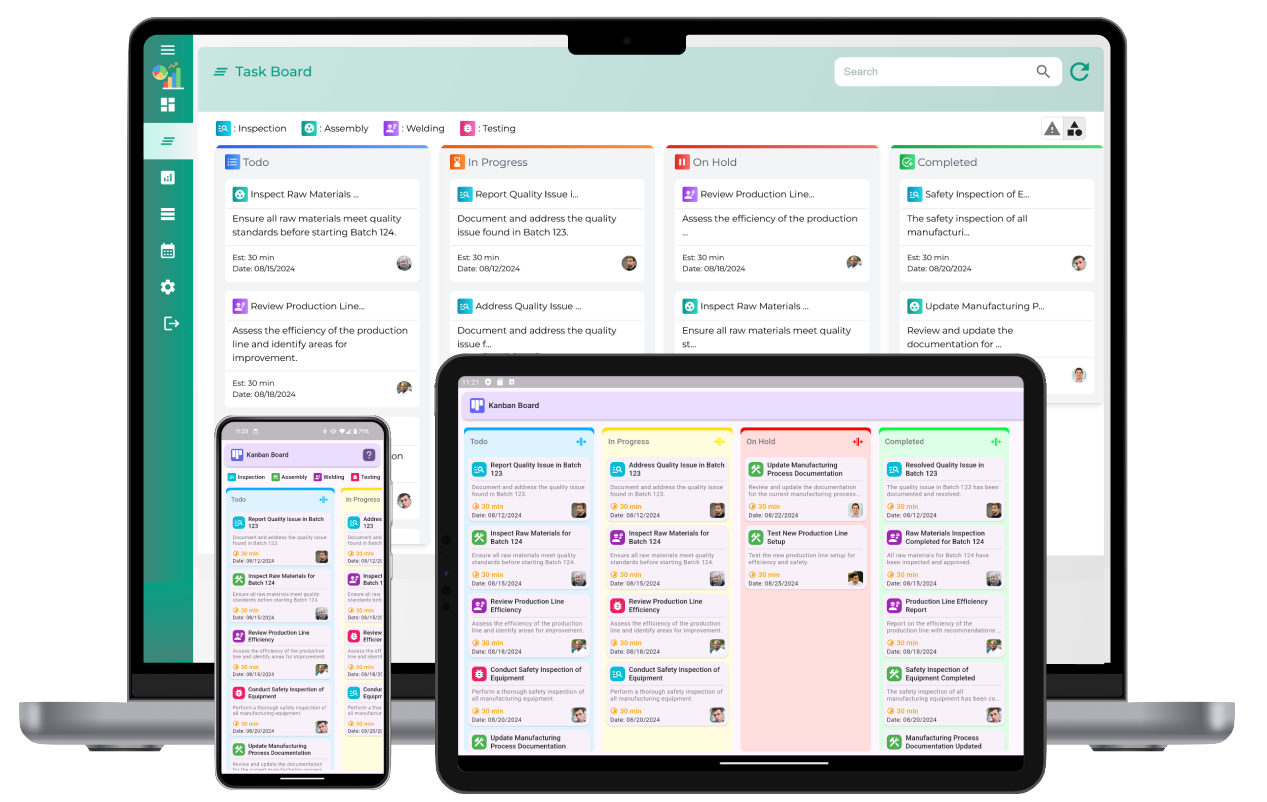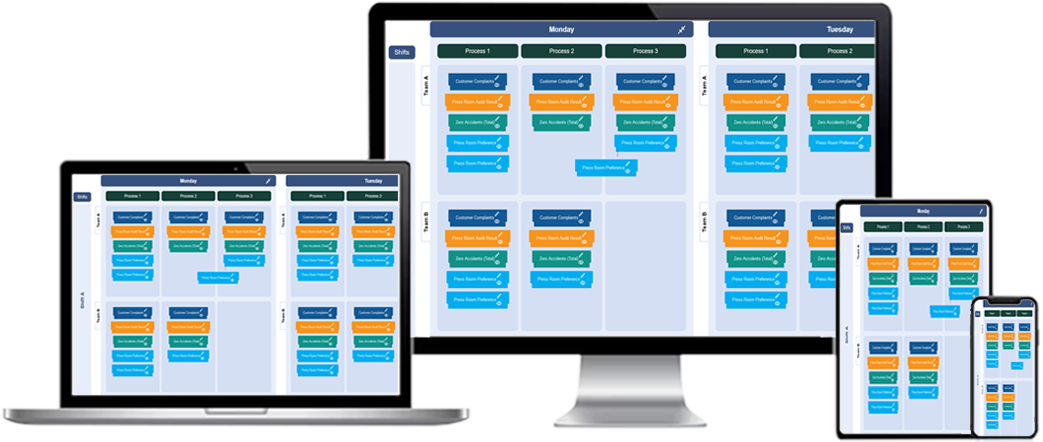Kanban boards are widely recognized as effective tools for managing workflows, visualizing progress, and limiting work in progress (WIP). However, as teams and projects grow in complexity, the need for more customizable and detailed task management tools arises. This is where transitioning from a Kanban board to a TCard board can provide significant advantages for team collaboration. A TCard board builds upon the principles of Kanban while offering enhanced flexibility, detail, and functionality to manage tasks and resources effectively.

Understanding the Limitations of Kanban Boards
While Kanban boards are excellent for visualizing workflows and tracking the status of tasks, they have certain limitations that can hinder team collaboration in more complex projects. Some of these limitations include:
- Lack of Detailed Task Information: Kanban boards focus primarily on task movement between columns, with limited space for detailed information such as dependencies, deadlines, or resource requirements.
- Limited Customization: The linear structure of a Kanban board can be restrictive for projects that require multi-dimensional tracking, such as categorizing tasks by teams, priorities, or locations.
- Scalability Challenges: As the number of tasks and team members grows, Kanban boards can become overcrowded, making it harder to maintain clarity and efficiency.
These challenges often lead teams to explore more advanced tools like TCard boards that address these gaps while retaining the core benefits of visualization and task tracking.
What is a TCard Board?

A TCard board is a task management system that uses cards to represent individual tasks, similar to a Kanban board. However, TCard boards allow for greater customization and detail. Each card typically contains fields for task descriptions, deadlines, priorities, responsible team members, and additional notes. The board itself can be structured to include multiple categories, tags, and filters, enabling teams to adapt the layout to their specific needs.
Unlike the traditional column-based structure of Kanban boards, TCard boards provide more flexibility in organizing tasks. This makes them particularly useful for projects with complex workflows, interdependent tasks, or the need for detailed resource tracking. Additionally, TCard boards are often designed to be more dynamic, allowing for easier adjustments as project requirements change.
How TCard Boards Enhance Team Collaboration
1. Enhanced Task Detail
One of the key advantages of TCard boards is their ability to capture and display detailed information for each task. This includes fields for:
- Task Name and Description: A clear outline of what the task involves.
- Assigned Team Members: Identifying who is responsible for completing the task.
- Deadlines: Indicating when the task needs to be completed.
- Priority Levels: Categorizing tasks as high, medium, or low priority.
- Dependencies: Highlighting tasks that need to be completed before others can begin.
This level of detail ensures that everyone on the team has a comprehensive understanding of their responsibilities and how their work fits into the broader project timeline.
2. Customizable Workflow Structures
TCard boards allow teams to customize the structure of their workflow to better suit the project’s needs. For example, teams can create multiple categories beyond the standard "To Do," "In Progress," and "Done" columns. These might include:
- Specific project phases such as "Design," "Review," or "Testing."
- Task priorities such as "Critical," "Urgent," or "Optional."
- Team-specific sections to manage tasks for different departments.
This flexibility enables teams to organize their work in a way that aligns with their unique processes, making collaboration more intuitive and efficient.
3. Improved Communication and Accountability
By providing a centralized platform for task tracking and communication, TCard boards promote accountability among team members. Each task card clearly shows who is responsible for completing the task and when it is due. Additionally, team members can use the notes section on each card to provide updates, share resources, or ask for clarification.
This transparency fosters a culture of collaboration and ensures that everyone is aligned on project goals and timelines. Regular updates on the TCard board also help team leaders monitor progress and address any issues or bottlenecks promptly.
4. Integration of Resource Management
In complex projects, managing resources effectively is crucial for maintaining productivity and meeting deadlines. TCard boards excel in this area by allowing teams to track resources directly on the board. This might include:
- Allocating specific team members to tasks.
- Tracking the availability of tools, equipment, or materials needed for each task.
- Identifying potential resource conflicts or shortages before they impact the project.
This integration of resource management into the task tracking system provides teams with a holistic view of the project, enabling them to plan more effectively and avoid unnecessary delays.
5. Scalability for Growing Teams
As teams grow or projects become more complex, the scalability of TCard boards becomes a significant advantage. Unlike Kanban boards, which can become cluttered with too many tasks, TCard boards can be organized into sections, categories, or layers to maintain clarity. This ensures that even large teams with multiple ongoing projects can collaborate effectively without losing track of individual tasks or responsibilities.
6. Continuous Improvement
TCard boards also support the lean principle of continuous improvement by providing teams with actionable insights into their workflows. By analyzing the data captured on the board, such as task completion rates or bottlenecks, teams can identify areas for improvement and implement changes to optimize their processes. Regular reviews of the TCard board ensure that the team’s workflows remain efficient and aligned with project goals.
Transitioning from Kanban to TCard Boards
For teams that are already using Kanban boards, transitioning to TCard boards is a natural progression when additional functionality or customization is required. The transition process typically involves the following steps:
- Evaluate Needs: Identify the limitations of the current Kanban board and determine what additional features are needed.
- Set Up the TCard Board: Customize the layout, columns, and fields to align with the team’s workflow and project requirements.
- Migrate Tasks: Transfer existing tasks from the Kanban board to the TCard board, ensuring that all relevant details are included.
- Train Team Members: Provide training on how to use the TCard board effectively and highlight the new features that enhance collaboration.
- Monitor and Optimize: Regularly review the TCard board to ensure it meets the team’s needs and make adjustments as necessary.
By transitioning from a Kanban board to a TCard board, teams can unlock new levels of collaboration, efficiency, and productivity, ensuring the successful completion of even the most complex projects.
What is a TCard board and how does it differ from a Kanban board for team collaboration?
A TCard board is a flexible tool that visualizes task management, allowing teams to track progress and collaborate. It differs from a Kanban board by offering more customization for stages and categories, making it ideal for teams with complex workflows.
How can a TCard board improve team collaboration after using a Kanban board?
After using a Kanban board, a TCard board can enhance team collaboration by offering more flexibility, allowing teams to better manage multiple stages and processes, improving communication and clarity around task status.
What are the key benefits of using a TCard board in team collaboration?
The key benefits of a TCard board include improved task tracking, better team communication, increased flexibility in categorizing tasks, and a more comprehensive visual representation of progress, helping teams stay aligned and focused.
How does a TCard board help teams with complex workflows compared to a Kanban board?
A TCard board offers more customization options, allowing teams to create additional columns or categories, making it better suited for complex workflows and multiple processes that Kanban boards may not be able to manage as easily.
Can a TCard board support multiple teams working on different tasks?
Yes, a TCard board can be customized to handle multiple teams working on different tasks by creating separate sections or categories for each team, ensuring that workflows remain organized and easy to follow.
How does a TCard board visually represent team progress after switching from a Kanban board?
A TCard board visually represents team progress by providing a clear view of each task’s stage, from “To Do” to “In Progress” to “Completed,” while offering more customization to show specific team progress and areas of focus.
What customization options does a TCard board offer for team collaboration?
TCard boards offer various customization options, including adding custom columns, categories, and color-coding, making it easy for teams to tailor the board to fit their specific collaboration and workflow needs.
How do teams use TCard boards to manage priorities in collaboration?
Teams can use TCard boards to manage priorities by assigning tasks specific labels, such as high, medium, or low priority, and categorizing tasks accordingly. This helps ensure that teams focus on the most critical tasks first.
How does the flexibility of a TCard board enhance team collaboration and communication?
The flexibility of a TCard board allows teams to adapt the board to their needs, whether it’s creating new stages, adding additional information to tasks, or reordering tasks, helping teams stay engaged and communicate more effectively.
What role does a TCard board play in ensuring that tasks are completed on time?
A TCard board ensures tasks are completed on time by providing a clear visual representation of task status, helping teams track deadlines, identify bottlenecks, and stay focused on tasks that need immediate attention.
How do TCard boards handle work-in-progress limits compared to Kanban boards?
TCard boards can handle work-in-progress limits by setting custom stages that show when a team has too many tasks in one category, helping to ensure that work flows smoothly and no team member is overloaded.
Can a TCard board help teams track dependencies between tasks?
Yes, a TCard board can help teams track dependencies between tasks by allowing them to link related tasks together and ensuring that one task is completed before the next one can begin.
How do TCard boards support cross-functional collaboration in teams?
TCard boards support cross-functional collaboration by offering a clear view of tasks across various departments, helping teams collaborate by tracking dependencies, milestones, and progress toward shared goals.
What are the advantages of switching to a TCard board from a Kanban board for project tracking?
Switching to a TCard board provides more flexibility in managing complex workflows, allows for better customization, and improves communication within teams, which can help improve efficiency and productivity in project tracking.
How does a TCard board integrate with other project management tools for team collaboration?
A TCard board can integrate with other project management tools by allowing teams to export data, sync with calendars, and link tasks with other digital tools, ensuring smooth collaboration and unified task management.